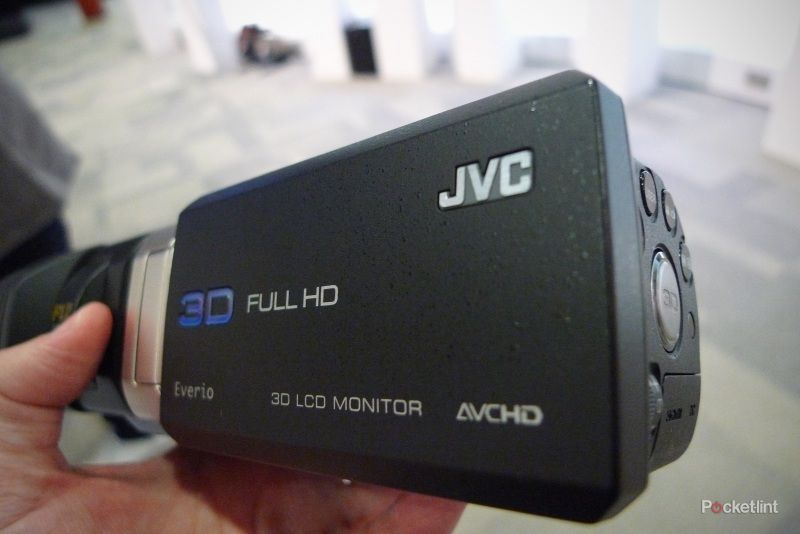JVC launched what it calls the world's first consumer camcorder with full HD 3D at CES 2011, although Sony actually pipped it to the post and announced its HDR-TD10E first. However, JVC's 3D device is due to hit UK shops before Sony's so, in a way, the claim still stands. We managed to get up close and personal with the new camcorder at JVC's UK HQ.
The GS-TD1 sports two lenses and two 3.32-magapixel CMOS sensors that enable it capture full HD 3D video by taking left and right images at 1920 x 1080i and processing them simultaneously using its high-speed imaging engine. According to JVC, the brand wanted to focus on creating a conventional camcorder for its 3D offering, rather than an add-on 3D lens, like the Pansonic VW-CLT1. Along with its 3D capture capabilities, the GS-TD1 can also display 3D images on its 3.5in 3D display, without the need for 3D specs, making it easier to get a good idea of what your video will look like on the big screen. The display features an easy-to-use on-screen menu that is very intuitive.
In comparison to the lightweight camcorders of today, the GS-TD1 has a relatively chunky chassis although the device is actually a great deal lighter than it looks thanks to its magnesium alloy frame. It certainly feels lighter and easier to hold than using Panasonic's lens attached to one of its latest camcorders. The JVC also sports an slightly mottled finish that helps to add a bit of extra grip and which distinguishes it as one of the brand's high-end models.
The main function buttons are well placed, making them easy to find and comfortable to use. What's more, the big, backlit 3D button on the back of the device makes it easy to switch between 2D and 3D which means that you'll always know which mode you're in.
The camcorder offers a 5x optical zoom while recording in 3D mode (10x in 2D) which we found to be a lot smoother than that of many rival camcorders. Both the battery port and the SD card slot can be easily accessed while the camcorder is mounted on a tripod, which is a nice touch. The built-in 64GB memory can be topped up using the SD slot but as this will probably get full up pretty quickly, you can archive videos directly using a Blu-ray burner or external HDD.
As well as recording in full HD MVC mode (the same codec as 3D Blu-ray) you can also choose from full HD AVCHD (side-by-side) or 2D AVCHD.
The images that we saw from the GS-TD1 on a projector screen, and on a 3D TV were superb and just as good as those offered by Panasonic's 3D video capture technology, if not better. Images were crisp and clear and the 3D effect was instant. The camcorder includes Automatic Parallax adjustment to ensure that the two images that make up the 3D picture are aligned properly so that crosstalk is avoided. This can also be adjusted manually, using the touchscreen, and really makes the difference between a good 3D image and one that will give you a headache.
The GS-TD1 also offers a few extras such as 3D time lapse video capture, which can be set from 1 to 80 secs and 3D stills. We had the opportunity to take a peek at a 3D still that had been created by a Fuji printer in Japan, in a tie-up with JVC. The company is hoping to adopt a similar collaboration with Fuji in Europe.
Along with 3D video capture, the device also captures "3D sound" thanks to its dual microphones and JVC's Biphonic technology. We didn't get much of a chance to play around with the audio, but we'll bring you more information as soon as we can get our hands on a device for an in-depth review.
The GS-TD1 is due to hit UK shops in March, priced at £1499.
What do you think of the GS-TD1? Will you be buying a 3D camcorder?

